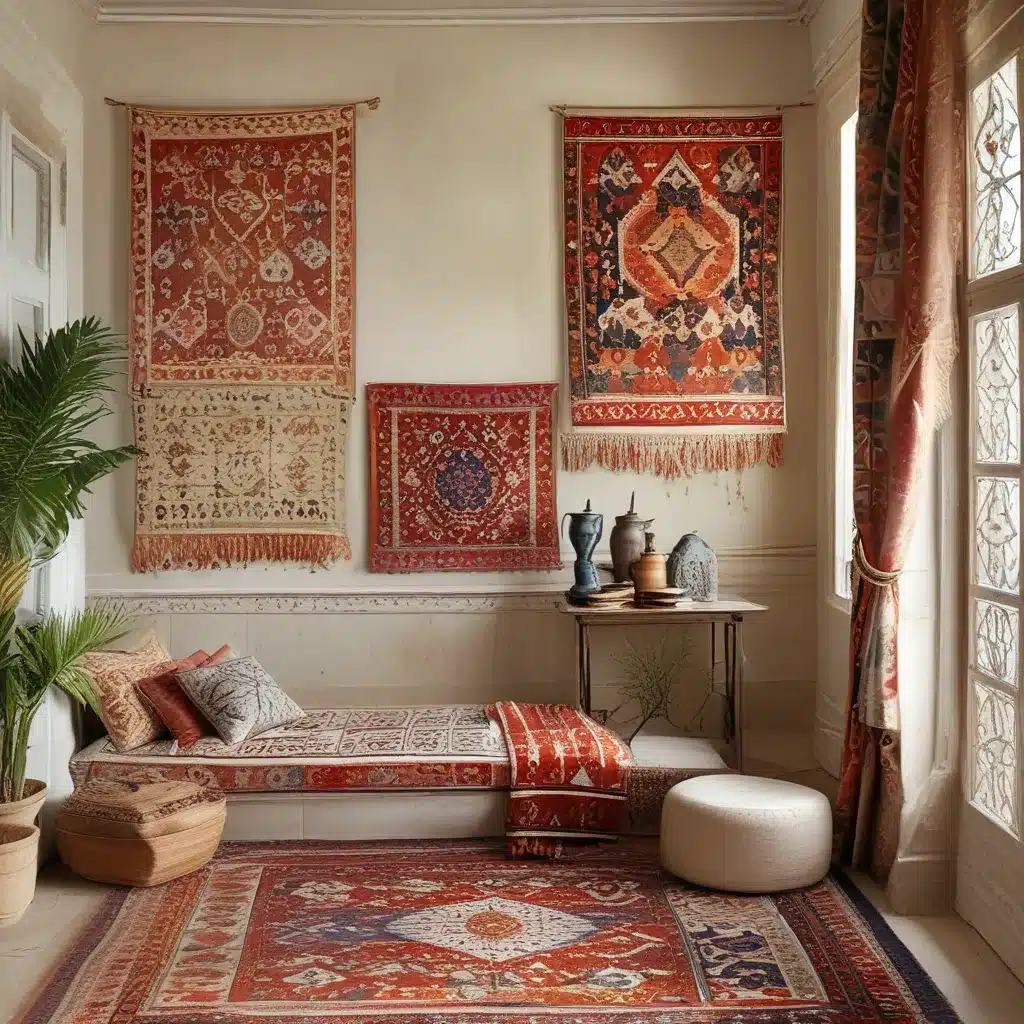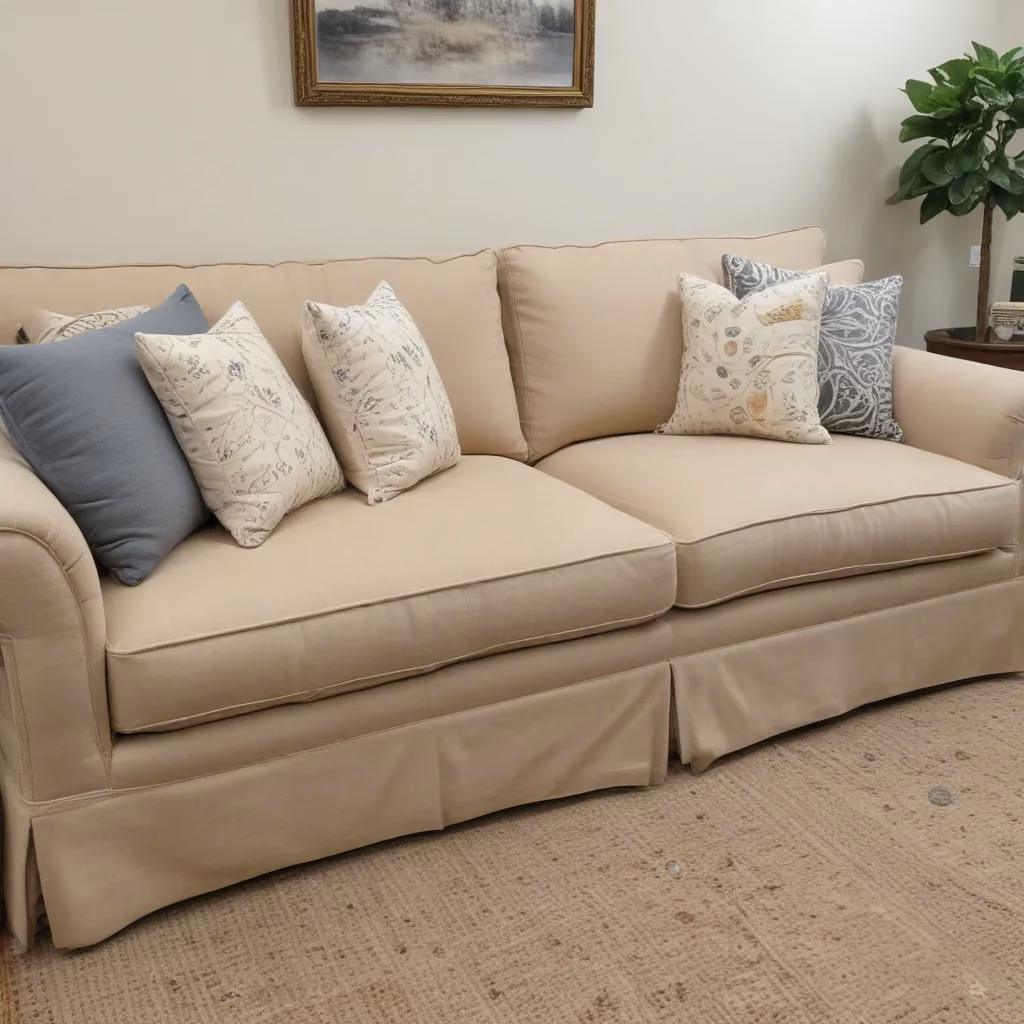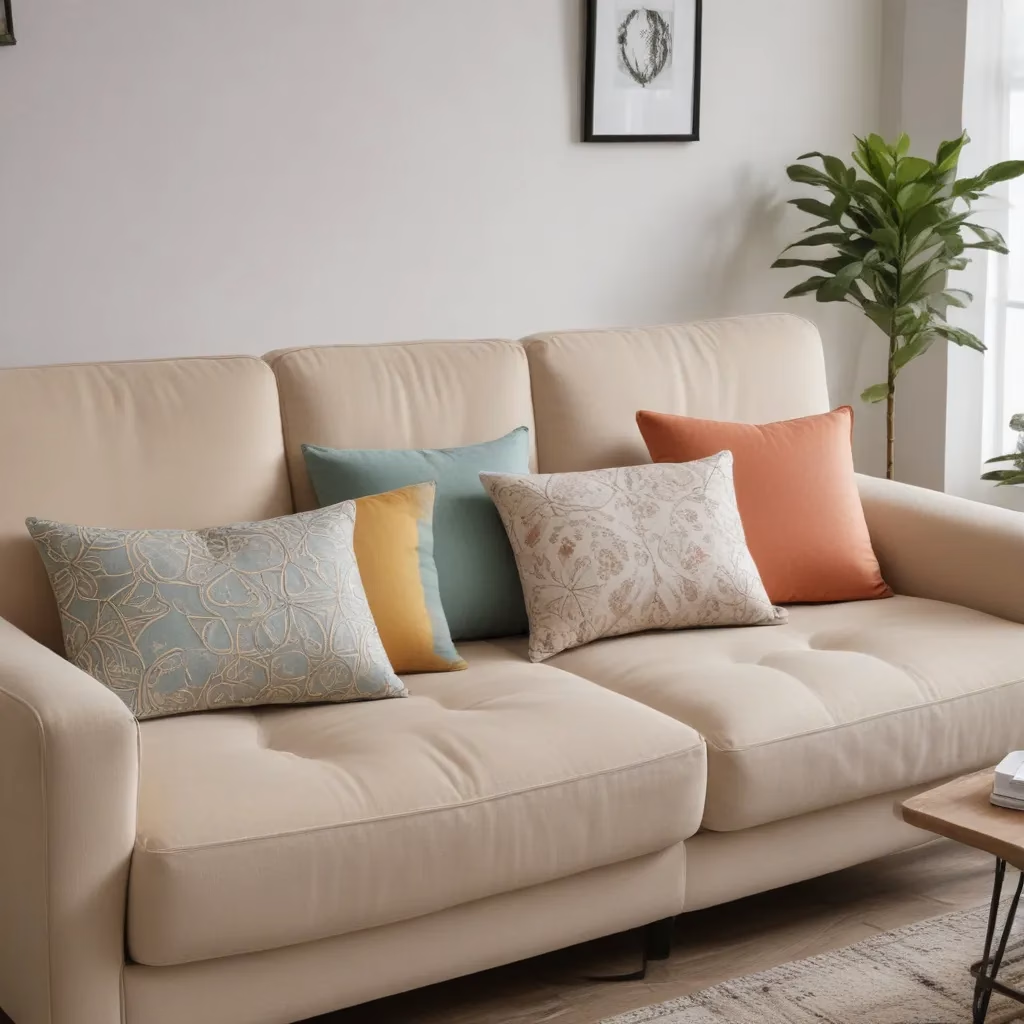Traveling the World through Textiles
Have you ever stepped into a room and felt like you’d been transported across the globe? That’s the kind of magic I aim to create in my home, and it all starts with textiles. From the vibrant hues of Moroccan kilims to the intricate embroidery of Central Asian suzanis, global textiles have the power to infuse any space with a sense of worldly wonder.
As the founder of Sofa Spectacular, a custom sofa company in the UK, I’ve made it my mission to bring these captivating design elements into people’s homes. But my love of global textiles isn’t just professional – it’s a lifelong passion that’s deeply rooted in my own experiences and heritage.
You see, I grew up in a household that was a kaleidoscope of cultural influences. My mother, who hailed from South Africa, had a keen eye for design and a deep appreciation for the beauty of the natural world. Our home was always filled with lush greenery and meticulously curated décor, much of it infused with distinct African and tribal stylings. As a child, I was endlessly fascinated by the intricate patterns and vibrant hues that surrounded me, and those early impressions would go on to shape my own aesthetic sensibilities.
Weaving a Global Tapestry
As I grew older, my wanderlust only intensified. I spent years traversing the globe, immersing myself in the rich tapestry of the world’s cultures and traditions. From the dusty souks of Morocco to the serene temples of Bali, I found myself captivated by the artistry and craftsmanship that permeated every corner of these far-flung destinations.
It was during these adventures that I developed a deep appreciation for the stories woven into the textiles I encountered. Each piece, whether it was a hand-stitched Berber rug or a delicately embroidered suzani, carried with it a history, a legacy of skill and dedication passed down through generations. I marveled at the painstaking processes that went into their creation, the deft fingers that brought these textiles to life.
As I began to incorporate these global treasures into my own home, I found that they did more than just add a touch of worldly flair to my décor. They became touchstones, reminders of the rich tapestry of human experience that exists beyond the confines of our everyday lives. Each time I gaze upon a vibrant ikat or a boldly patterned Kuba cloth, I’m transported to a different time and place, a different culture and its unique way of expressing beauty.
Embracing the Imperfect
One of the things I love most about global textiles is their embrace of imperfection. In a world that often values sameness and uniformity, these textiles celebrate the beauty of the handmade, the unique variations that arise from the human touch.
Take shibori, the Japanese art of indigo dyeing, for example. The process involves carefully folding, twisting, and binding the fabric before submerging it in the dye, resulting in mesmerizing patterns that are never quite the same. The beauty of shibori lies in its embrace of the unpredictable, the unexpected – much like life itself.
Or consider the Berber textiles of Morocco, with their geometric designs and intricate embroidery. Each piece is a testament to the skill and artistry of the weaver, and no two are exactly alike. The slight variations in color, pattern, and texture are what give these textiles their irresistible allure, a constant reminder that perfection is overrated.
As I’ve learned from the inspiring Jo of La Boheme House, the key to embracing global style is to let go of the notion of perfection and instead, celebrate the unique beauty that arises from the human hand. “Anything goes,” Jo says, “If you love it, it belongs.”
Textiles as Storytellers
But global textiles are more than just beautiful objects to be admired – they’re also powerful storytellers, windows into the lives and traditions of the cultures that created them. Take, for example, the suzanis of Central Asia. These intricate, embroidered tapestries were traditionally woven by brides as part of their wedding dowry, a symbol of the love and care they would bring to their new homes.
As the blog at One Kings Lane explains, the word “suzani” itself comes from the Persian word for “needle,” reflecting the painstaking effort that went into each piece. The floral motifs, often featuring vibrant sunbursts and pomegranates, were a way for these women to bring the beauty of the natural world into their domestic spheres, to create a sense of warmth and abundance in the face of the harsh desert landscapes.
Or consider the Kuba cloth of the Democratic Republic of the Congo, woven from the fibers of the raffia palm. These textiles were traditionally used in religious ceremonies, with each geometric pattern holding a unique significance to the Kuba people. The process of creating a single Kuba cloth could take up to a month, with entire families working together to bring the design to life.
When I incorporate these textiles into my own home, I’m not just adding a dash of global flair – I’m inviting the rich histories and traditions of these cultures to become part of my everyday life. Each time I run my fingers over the intricate embroidery of a suzani or the tightly woven patterns of a Berber rug, I’m reminded of the human stories that lie beneath the surface, the legacies of skill and creativity that have been passed down through the generations.
A Tapestry of Inspiration
As I’ve continued to explore the world of global textiles, I’ve found that they not only serve as windows into other cultures, but also as sources of endless inspiration for my work as a custom sofa designer. The vibrant hues, the intricate patterns, the unexpected combinations – they all spark my creativity in unexpected ways, pushing me to think beyond the boundaries of traditional upholstery.
Take, for example, the rich, earthy tones of a Moroccan kilim. I might incorporate those bold, geometric motifs into the design of a one-of-a-kind sofa, creating a piece that feels both grounded and adventurous. Or I might take inspiration from the delicate, floral embroidery of a suzani, translating those delicate motifs into a series of custom throw pillows that add a touch of global elegance to a living room.
But it’s not just the textiles themselves that inspire me – it’s the stories behind them, the rich histories and cultural traditions that imbue each piece with a sense of meaning and purpose. When I’m working with a client to design their perfect sofa, I often find myself weaving these narratives into the design process, encouraging them to consider the ways in which their home can become a reflection of their own unique experiences and perspectives.
After all, isn’t that what global style is all about? It’s not just about creating a visually stunning space – it’s about crafting an environment that feels like a true extension of the people who inhabit it, a tapestry of experiences and inspirations that come together to create something truly one-of-a-kind.
A World of Possibilities
As I look around my own home, I’m constantly in awe of the ways in which global textiles have transformed the space, infusing it with a sense of worldly wonder and timeless beauty. From the vibrant kilims that adorn my living room to the delicate suzani pillows that grace my sofa, each piece tells a story, a testament to the rich cultural heritage that has inspired my design sensibilities.
And as I continue to work with clients at Sofa Spectacular, I’m endlessly excited by the possibilities that global textiles hold. Whether it’s a bold, geometric Berber rug or a delicate, hand-stitched Kuba cloth, these design elements have the power to transform a space, to transport us to distant lands and eras, and to infuse our homes with a sense of worldly wonder.
So if you’re looking to add a touch of global flair to your living room, I encourage you to embrace the imperfect, the unexpected, and the endlessly inspiring world of global textiles. Who knows where they might take you?




